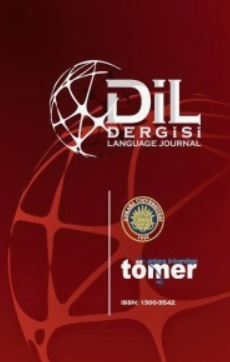GENDER-BASED USE OF CONCESSION: INSIGHTS FROM TURKISH SPOKEN DISCOURSE
GENDER-BASED USE OF CONCESSION: INSIGHTS FROM TURKISH SPOKEN DISCOURSE
Author(s): Derya Aydın, Gülsüm Songül ErcanSubject(s): Gender Studies, Sociolinguistics, Turkic languages
Published by: Ankara Üniversitesi TÖMER
Keywords: Concession; Spoken Discourse; Interactional Linguistics; Discourse Analysis; Gender;
Summary/Abstract: Concessive relations have been defined in terms of concepts such as surprise, counter-expectation, incompatibility, or conflict between clauses in literature. Concession can be marked explicitly by a range of linguistic resources or expressed implicitly and perceived by the hearer based on contextual cues. In previous studies, various functions of concession including expressing a contrast, preventing potential misunderstandings, correction/repair, alignment, and topic management have been reported. Traditional view on gender and language allege that women tend to seek common ground, avoid disagreement and be polite. The current view, on the other hand, claim that discourse context is determinant on such tendencies. Considering the discursive functions of concession, it can be presumed that women opt for concession more frequently than men do. Therefore, the aim of this study is twofold: to determine (if any) gender-based differences (i) in the marking and use of concessive resources and (ii) in the functions of concession in Turkish spoken discourse within the framework of Interactional Linguistics. The database of the study consists of the transcriptions of six hour daily Turkish conversations. Our findings have revealed that concession is mostly marked explicitly (83.5%) with no significant difference between the female and male participants and the most used concessive marker is ‘ama’ (but) by both genders (33.7%). As for the functions, the concessions are mostly used to express a contrast (49.4%) with no significant difference between male and female speakers. These findings support the view that it is not the gender of the speakers but the discourse context that shapes the language use.
Journal: Dil Dergisi
- Issue Year: 172/2021
- Issue No: 2
- Page Range: 133-159
- Page Count: 27
- Language: English

